Phantom itches, dread, panic and paranoia are the usual reactions to the mention of bedbugs. Easy to get and difficult to get rid of, bedbugs can become the bane of your existence. But instead of throwing out your mattress and random furniture, you just need to understand the ways of the bedbugs in order to successfully banish them.
Bedbugs are blessed with a life span of 6 to 12 months, which is solely dedicated to sucking your blood and reproducing. They become full-grown in 21 days and an adult female can lay up to five eggs daily. What’s more, they can actually survive for months without blood.
Bedbugs are very resilient creatures who love to play hide and seek. To beat them at their own game and put an end to the infestation, your efforts must be thorough and consistent. You’ll need to keep calm throughout this ordeal. Panicking will get you nowhere.
Before starting with any bug control measure, there are some important initial steps. Start by removing the clutter in the area to be treated. All the small and movable articles like stationery, pet bowls, vases, toys, footwear, phones, laptops, etc. should be checked for bugs before being removed. Bedbug-free articles should be sealed in clear plastic bags.
Then, you can proceed with your choice of a variety of environmentally friendly extermination options that don’t require use of harsh chemicals to get rid of bed bugs.
Here are eight methods to combat a bedbug infestation by yourself:
Contents
Method 1: By Vacuuming and Washing
Vacuuming is an effective way to combat a large infestation. Bedbugs like to cling to surfaces and a vacuum cleaner is good at dislodging and capturing them. The bedbugs collected in the vacuum container or disposal bag can then be disposed of carefully.
You can combine hot laundering with vacuuming to get even better results. All washable items can be run through a hot washing cycle for effective extermination, as bedbugs can’t tolerate high temperatures. This will destroy all the bedbugs in any stage of their lifecycles. Items that can’t be washed can be run through a hot dryer for 20 to 30 minutes to kill the bedbugs.
For vacuuming the bedbugs out of your home, you’ll need a regular household vacuum cleaner, preferably with a HEPA filter. Handheld vacuum cleaners or vacuums with fabric hoses or cloth bags are not an ideal choice when dealing with bedbugs.
- Identify the bedbugs’ hiding sites before vacuuming.
- Use a crevice attachment to pull out the bedbugs from their hiding places. Set your vacuum to full suction power for successful extraction of the bugs.
- Vacuum the bedding, upholstery, carpets and any other articles that may harbor bedbugs.
- Thoroughly vacuum the seams and folds of your upholstery. No crack or crevice should be overlooked.
- Soft toys, towels, pillows and blankets should be vacuumed and sealed into clear plastic bags.
- Turn over the furniture and take apart any articles that can be reassembled, such as bed frames. Thoroughly vacuum the newly discovered hiding sites.
- After you’re done in an area, keep the vacuum running for some time so the suction can prevent the bedbugs from coming back out. Seal the end of the attachment with tape or stuff it with some crumpled newspaper to block their escape.
- When you’ve finished vacuuming, seal the vacuum bag and place it in a clear plastic bag. Secure the mouth of the plastic bag and discard it in a trash can with a lid. This should preferably be done outdoors.
Be thorough in the vacuuming process and repeat every week for a complete extermination.
Method 2: Using Steam Treatment
Many professionals rely on steam for effective bedbug treatment, as bedbugs die at temperatures of 50° Celsius and above. If administered with thorough care, steam treatment can effectively kill bedbugs because most steamers operate at a temperature of at least 100° C. If you can’t afford to buy a steamer, you can rent one.
Steam is a great option for bedbug control. It kills the bugs in all the life stages, including the eggs. Also, steam can easily get into places where normal extermination agents can’t reach, such as deep under the mattress and box spring, under the wallpaper and in the cracks and crevices in the wall.
You can also use a dry steam treatment that will prevent moisture from getting into the upholstery fabric.
- Start by managing the clutter and sealing all the bedbug-free items in clear plastic bags.
- Select attachments for the steamer suited to the surfaced to be treated.
- Keep a towel or rag in your other hand to absorb the collected steam water and wipe off any excess moisture from the surfaces.
- Steam the bedding first, going through the sheets, pillows and blankets followed by the mattress and box spring. Let each item air out in a well-ventilated area, if possible.
- Dismantle the bed frame, if it can be taken apart and reassembled. Steam the cracks and crevices exposed.
- Similarly, steam all of the furniture in the area, the top surface and bottom after turning it over. Be careful so as not to damage any varnished pieces.
- Steam the floors, curtains, any cracks and crevices in the walls and fixtures that may harbor the bedbugs. Bedbugs especially like to hide behind picture frames, wall clocks as well as any decorative fixtures.
- Let the entire area air-dry to prevent mold before returning everything to its place.
Keep any eye out for any sign of the bedbugs and repeat the procedure at a weekly interval. You may need to repeat the steam treatment 2 or 3 times to permanently get rid of the bedbugs.
Method 3: Using Rubbing Alcohol
Not only you can use it to disinfect a bedbug bite, rubbing alcohol or isopropyl alcohol can also be used to get rid of the bedbugs. It kills bedbugs on contact and works on adults, nymphs and eggs. Spraying areas with rubbing alcohol also discourages the bedbugs from laying eggs there.
Liquid dish soap is another good insecticide that kills bedbugs on contact. You can combine it with rubbing alcohol to make an effective anti-bedbug spray that is safe to use. Since it kills on contact, it won’t work as effectively on hidden bedbugs, which means that you need to identify the bugs’ hiding sites before proceeding with this method.
Things you’ll need:
- Isopropyl alcohol (99%)
- Liquid dish soap
- Water
- Spray bottle
Mix water, rubbing alcohol and liquid dish soap
- Pour 2 parts water into a spray bottle.
- Pour 2 parts rubbing alcohol into the bottle.
- Add 1 part liquid dish soap through a funnel.
- Close the bottle and shake vigorously to mix the contents together.
Stick to the ratio of the ingredients and mix together the quantity required. Spray the solution on any bedbugs you see and their suspected hideouts. You may need to spray their hideouts several times.
Spray the solution regularly until the signs of infestation disappear. You may keep spraying the solution as a deterrent.
Method 4: Using Diatomaceous Earth
Diatomaceous earth (DE) is one of the most effective non-contact measures that can be taken against most bugs, including bedbugs. DE is mined from the fossilized remains of diatoms, which are essentially microscopic plants.
The structure of DE resembles jagged, broken glass at a microscopic level, due to the hardened silica shell of the diatoms. When the bedbugs come in contact with this soft, powdery dust, it makes lacerations in their exoskeletons and dehydrates them, eventually killing the little buggers.
Using DE to combat bedbugs is one of the most cost-efficient ways available. Always use food-grade DE, which is safer as it doesn’t contain additives that can be harmful for you and your family, especially children and pets.
- Sprinkle food-grade DE wherever the bedbugs frequently venture like the bedding, mattress, bed frame, etc.
- If dealing with a widespread infestation, spread the DE on the floors, especially along the edges of the walls. Carpets and upholstery shouldn’t be overlooked either. Use an applicator to apply DE over walls and fixtures.
- Let the DE stay for a couple of days, if possible, or at least several hours.
- Use a shop vac or a vacuum with a HEPA filter to clean up the DE along with the dead bedbugs.
- To clean the DE from bare floors, you may resort to sweeping followed by mopping. Sweeping will remove the dead bedbugs along with most of the DE, the remaining of which can then be mopped up.
Repeat the entire process as needed.
Method 5: Using Silica Gel
Silica gel is a remarkable drying agent that is usually used to protect packaged electronics, cosmetics, pharmaceuticals and powdered foods from moisture, but it can also be used to kill bedbugs. Silica gel is synthetic silicone dioxide that has a porous and granular appearance.
Like DE, silica gel also kills the bedbugs by dehydrating them. While DE is a naturally occurring source of silica, silica gel is artificially synthesized. Another difference is that DE dehydrates the bedbugs due to its abrasive properties, whereas silica gel acts as a sponge, absorbing the bedbugs’ oils and protective waxy coating. The application, however, is quite similar to that of DE.
- Grind up the silica gel tablets or granules. You can either purchase them or get them with certain packaged goods.
- Sprinkle the ground-up silica gel on the areas frequented by bedbugs like the bedding, mattress and box spring as well as their identified hiding sites.
- Leave the silica gel in place for a couple of days.
- Vacuum up the powdered silica gel along with dead bedbugs.
Method 6: Using Baking Soda
Baking soda can also be helpful against bedbugs because it acts as a desiccant. It also kills bedbugs by dehydrating them.
Things you’ll need:
- Baking soda
- Water
- Paint brush
Make a baking soda paste
Add water to baking soda and make a runny paste that can be easily applied onto a surface. Unlike dry baking soda, this paste will stick to the surface and adhere to the bedbugs that come in contact with it.
- Coat the bedbug sites and the nearby areas with the baking soda paste. You can use any paint brush for this purpose.
- Allow the paste to dry and leave it for a few days. This will allow the bedbugs to come in contact with it.
- Clean it up after a few days.
Watch for any signs of the bedbugs and reapply if needed.
Method 7: Using Tea Tree and Lavender Oils
Using essential oils to keep bedbugs at bay is effective and one of the most pleasant ways to deal with them. Essential oils not only kill bedbugs on contact, they also act as a preventive measure.
Bedbugs, like most insects, detest the intense smell and taste of essential oils. Lemongrass, thyme, clove, tea tree, eucalyptus or lavender oil can easily be used to deal with bedbugs. Using a blend of one or more essential oils can prove to be more effective.
Things you’ll need:
- Water – 2 tablespoons
- Tea tree essential oil – 8 to 10 drops
- Lavender essential oil – 8 to 10 drops
- Small spray bottle
Combine essential oils and water in a spray bottle
- Put 2 tablespoons of water into a small spray bottle.
- Add 8 to 10 drops of tea tree essential oil.
- Add 8 to 10 drops of lavender essential oil as well.
- Close the bottle and give it a shake. Your bedbug deterrent is ready.
- Spray this solution on any bedbugs you may spot.
- Also, spray it over your entire bed area, dresser, curtains and the bugs’ likely hideouts.
The general spraying should be repeated weekly to keep the bedbugs out of your bedroom.
Method 8: Using Professional Help
Like it has already been said, bedbugs are freakily sneaky. Your best bet is to identify the infestation early and deal with it mercilessly. But if the situation seems out of control and you find yourself in the middle of a raging bedbug infestation, getting help from a professional is a good idea.
Bedbugs reproduce notoriously and can spread real fast. If you’re not careful, they may end up spreading into nearby households, which will definitely put you at odds with your neighbors. If you’re unable to contain the situation, it is best to get professional help.
You may talk to the personnel about the methods they’ll be using. If you’re not in favor of using highly toxic chemical treatments, you may opt for more natural treatments like professional steam treatments. Discuss and come to an agreement about the entire process.
You should ask about the preparatory measures to be taken before the treatment. Getting a list of do’s and don’ts would be wise a measure. You should also ask about any precautionary measures that may be required to be taken after the procedure.
Keeping the above points in mind would ensure your convenience throughout the procedure as well as result in effective bedbug extermination.
Additional Tips
- Avoid using a bristle attachment while vacuuming. Bedbugs can cling to the bristles and be transferred elsewhere.
- Steam treatment should not be administered into switchboards, as it may give rise to short-circuits and pose a fire hazard.
- Keep rubbing alcohol away from switchboards and any electronic appliance.
- While working with DE, keep yourself from inhaling it because it may dry out your mucous glands and cause irritation. Wear a dust mask while sprinkling and cleaning up DE, as prolonged exposure can be harmful to your lungs.
- Always dispose of captured bedbugs and bedbug-infested articles in a way that the bedbugs can’t escape and spread to other locations.



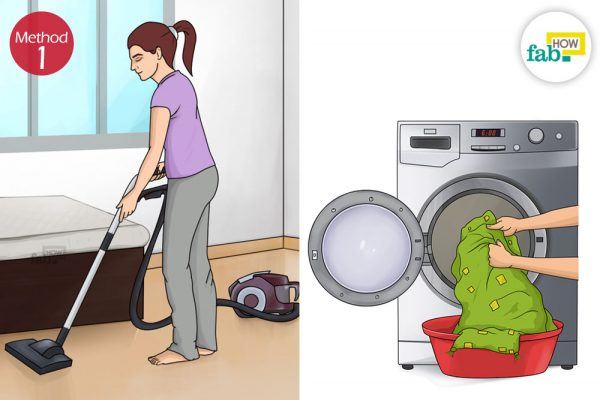

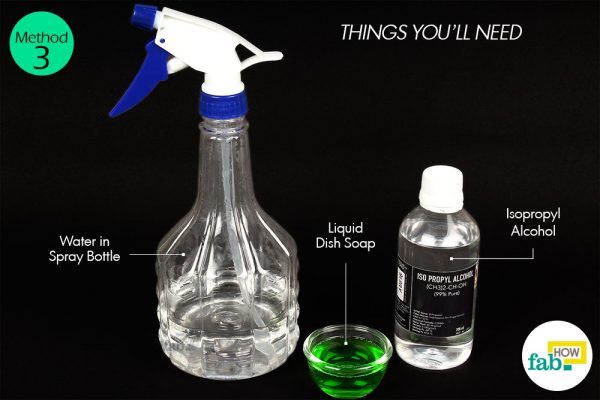







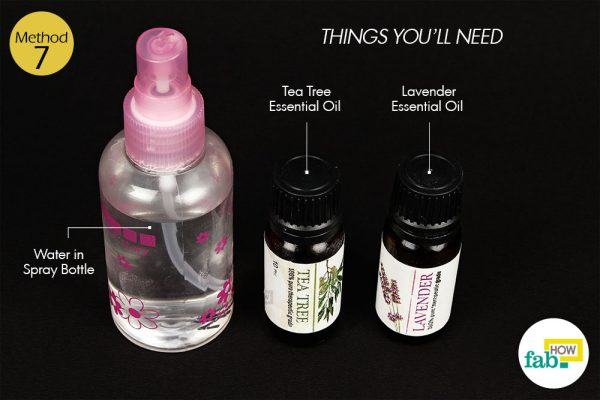

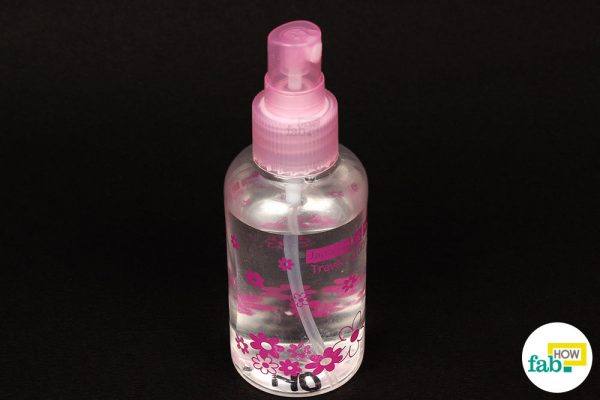
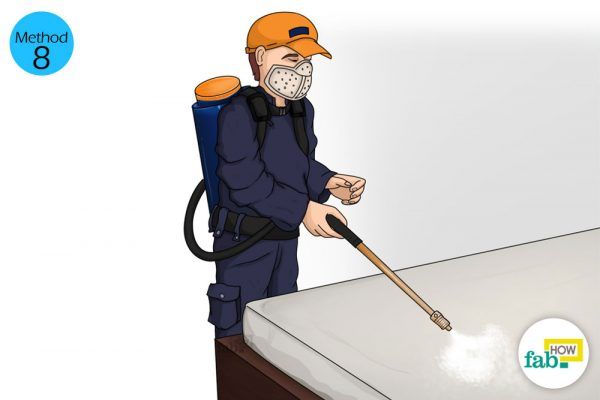
Need
Can baby powder that has talc be used like the baking powder paste idea?